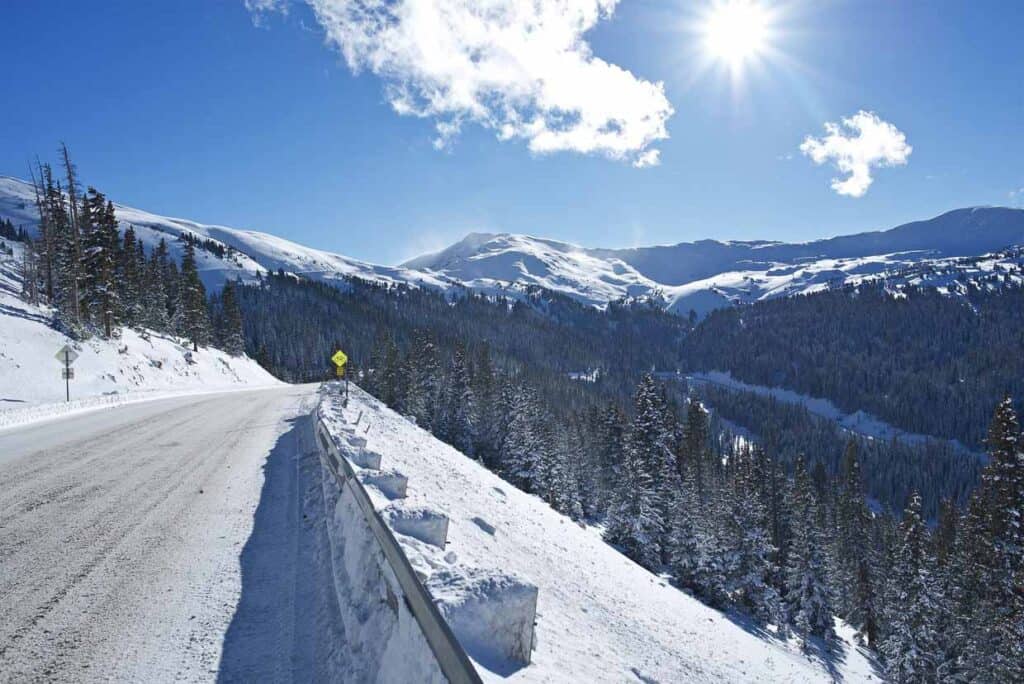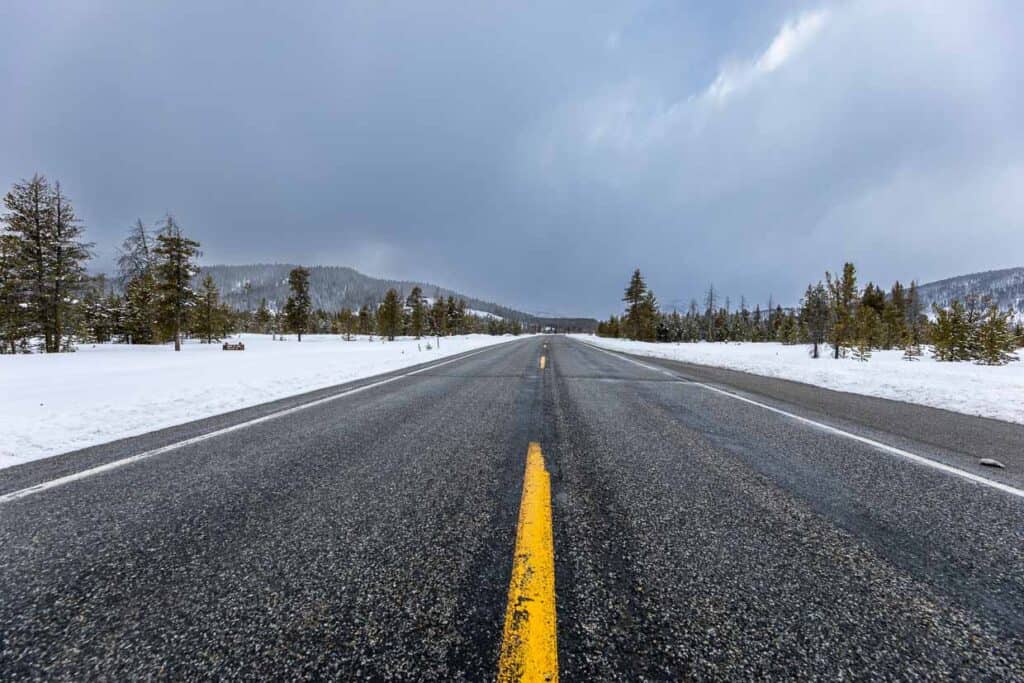As winter descends upon us, so do the challenges of traveling in adverse weather conditions. Snow, ice, sleet and freezing temperatures can turn a routine road trip into a hazardous adventure. As a lifelong Alaskan, I can share what I keep in my emergency car kit for winter driving situations because being prepared in Alaska can be the difference between life and death.
Preparing a winter emergency car kit ensures your safety and peace of mind during winter travels. Your kit can be a lifesaver in unexpected situations, providing you with essential tools and supplies to weather any storm or emergency on the road.

This post may contain affiliate link(s). As an Amazon Associate, I earn from qualifying purchases. See Disclosures.
The necessity of a winter emergency car kit
Winter weather can be unpredictable, and accidents or breakdowns can happen whenever you’re traveling. A winter emergency car kit is not just a convenience; it’s a necessity. It’s the difference between being stranded in the cold, waiting for help and having the means to take control of your situation until assistance arrives.
Essential Items for your winter emergency car kit
Preparing a kit in the fall before you need it is a good idea, but it’s never too late. Even if you just get some essentials into your car, you’re better off than having nothing.
Blankets: A thick, warm blanket can be a lifesaver when you’re stuck in a cold car. It provides insulation and helps retain body heat.
Extra clothing: Include gloves, a hat, scarves and extra layers of clothing to keep you warm.
Hand warmers: We use these little hand warmers when we need an extra quick warm-up. These reusable hand warmers are excellent, too.
Non-perishable snacks: Granola bars, nuts, jerky and dried fruits are good options. They provide energy and sustenance. You can also bring homemade cookies on your travel days.
Bottled water: Staying hydrated is crucial, even in cold weather. Keep a few bottles of water in your kit. This can be tricky when you live in a cold area because it can freeze and burst. Bringing fresh water with you on every trip works. Or keep it in the passenger area of your vehicle, and it may stay in liquid form. A thermos of hot cocoa is nice to take with you whenever you’re heading out.
Basic first aid kit: Either purchase a first aid kit or make your own to include bandages, antiseptic wipes and adhesive tape. These can help treat minor injuries. Be sure to include over-the-counter pain relievers in case of discomfort or pain.
A light source: This can be a flashlight or an emergency lamp with a rechargeable battery. Portable emergency lights often include accessories like a jump starter, air compressor or phone charging ports.
Snow and ice tools: A good shovel can help you get out of a ditch. As well as an ice scraper to clear your windows.
Something for traction: This can be sand or kitty litter or these easy-to-use traction pads. We have used the traction pads successfully for a while now and really like their ease. They’re particularly handy for teen drivers.
Jumper cables: A dead battery can happen in cold weather. Jumper cables can get your car back on the road.
Portable phone charger: Ensure your phone remains charged to call for help or access information. Everyone in our family has a rechargeable battery just for their phones.
Reflective triangles or flares: Help make your vehicle visible to other drivers and emergency responders. Flares show up nicely in the dark but do burn out, so triangles are a longer-term product. We keep both of these in cars for the best protection.
Multi-tool or utility knife: A versatile tool that can assist in various situations. I keep a multi-tool in the side pocket of my car, and it has come in handy in so many situations in any season.

Also, consider a few more ideas
Winter tires and chains or studded tires can make life easier in winter driving. But remember, they don’t make you infallible; you can still slip, slide or get stuck when using them.
A full tank of gas is also a good idea for winter driving. You may be stuck in traffic and need to keep it running for an extended period.
When driving, wear weather-appropriate clothing and boots. If you’re stuck somewhere, these will serve you well.
Regular check and maintenance
Regularly check the contents of your car emergency kit to ensure they are in good condition and replace any expired or damaged items. Check them monthly and replace items as needed.

How to use your winter emergency car kit
The first step is knowing what to include in your winter emergency car kit for winter travel. The second step is understanding how to use it effectively is equally important.
Stay calm: In a winter emergency, remaining calm and collected is essential. Panic can lead to poor decision-making.
Signal for help: If you’re distressed, use your reflective triangles or flares to make your vehicle visible to others.
Stay inside: If you’re stranded in your vehicle, it’s generally safer to stay inside, where you’re protected from the cold and other vehicles sliding around.
Run the engine wisely: Only run your engine intermittently to conserve fuel. Prevent carbon monoxide buildup by keeping your tailpipe clear.
Stay informed: Watch weather updates and emergency alerts on your phone.
Conserve supplies: Use your supplies sparingly. Taking fresh snacks, water and a hot drink with you will help stretch your supplies.
Call for help: If your phone is functional, call for assistance and provide your location as accurately as possible.
An emergency car kit is an investment that can improve your safety and well-being during cold-weather travel. Assemble your kit, maintain it and drive defensively in cold weather. With the right supplies and knowledge, you can navigate the challenges of winter driving with confidence and peace of mind.
Laura Sampson of Little House Big Alaska is on a mission to teach modern family-oriented home cooks how to make old-fashioned foods new again. She shares her passion for home cooking, backyard gardening and homesteading on her website and blog.











